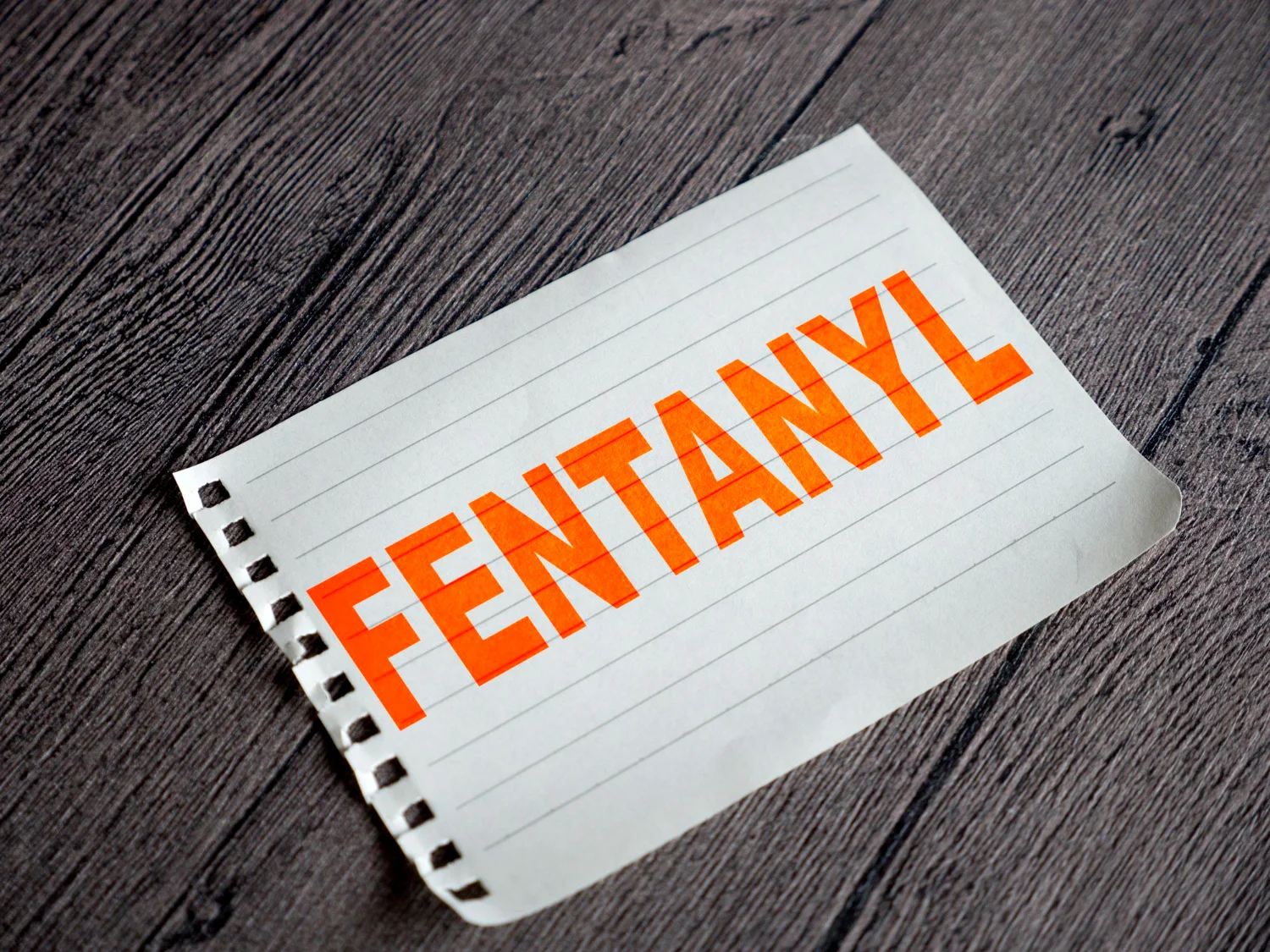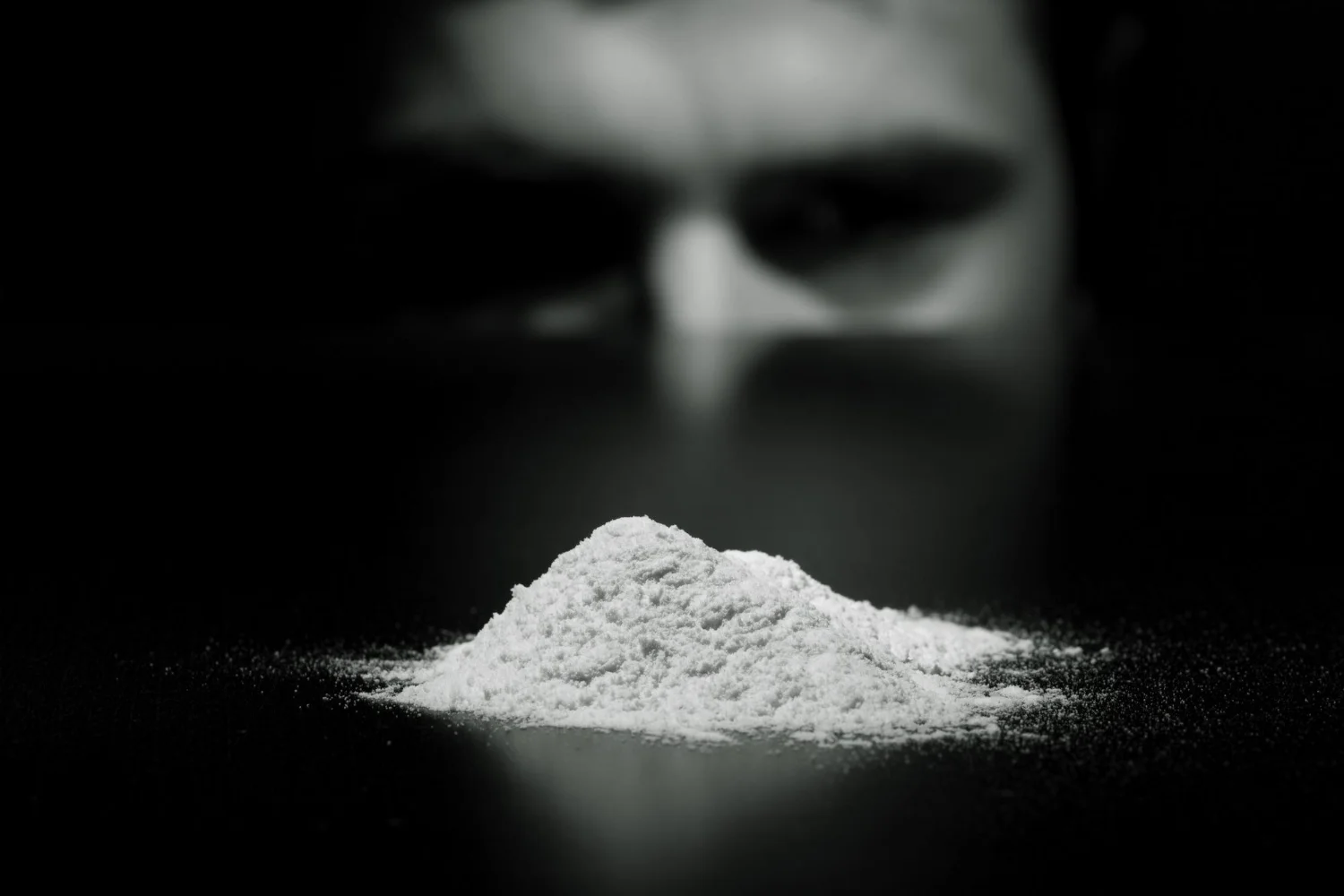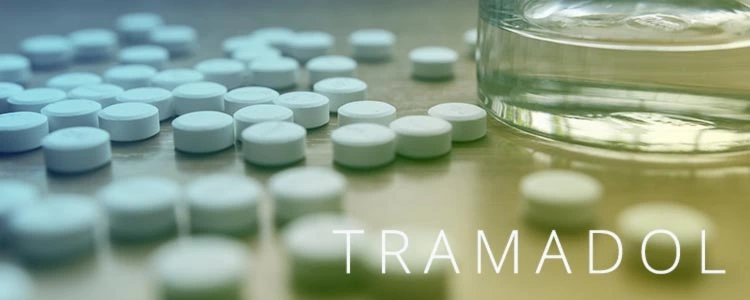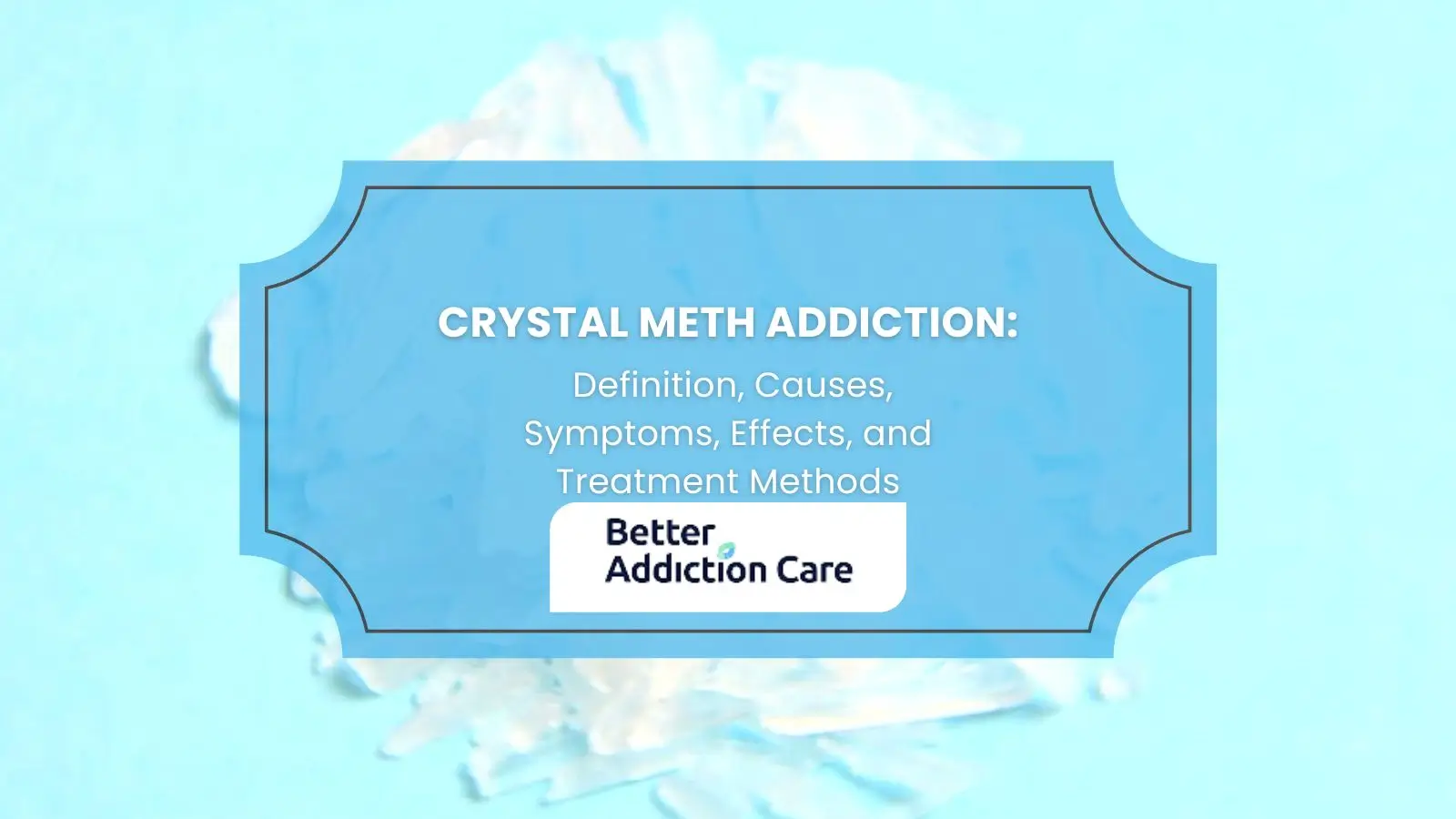Xanax Colors Pill Identifier Guide: Types of Xanax Bars
Xanax (alprazolam) comes in many colors, shapes, and strengths, which can make it confusing to tell pills apart.
While these features are designed to help with identification, counterfeit Xanax is widespread and often looks nearly identical to the real thing.
The most important rule: color or shape alone cannot confirm a pill’s authenticity — only the imprint code can.
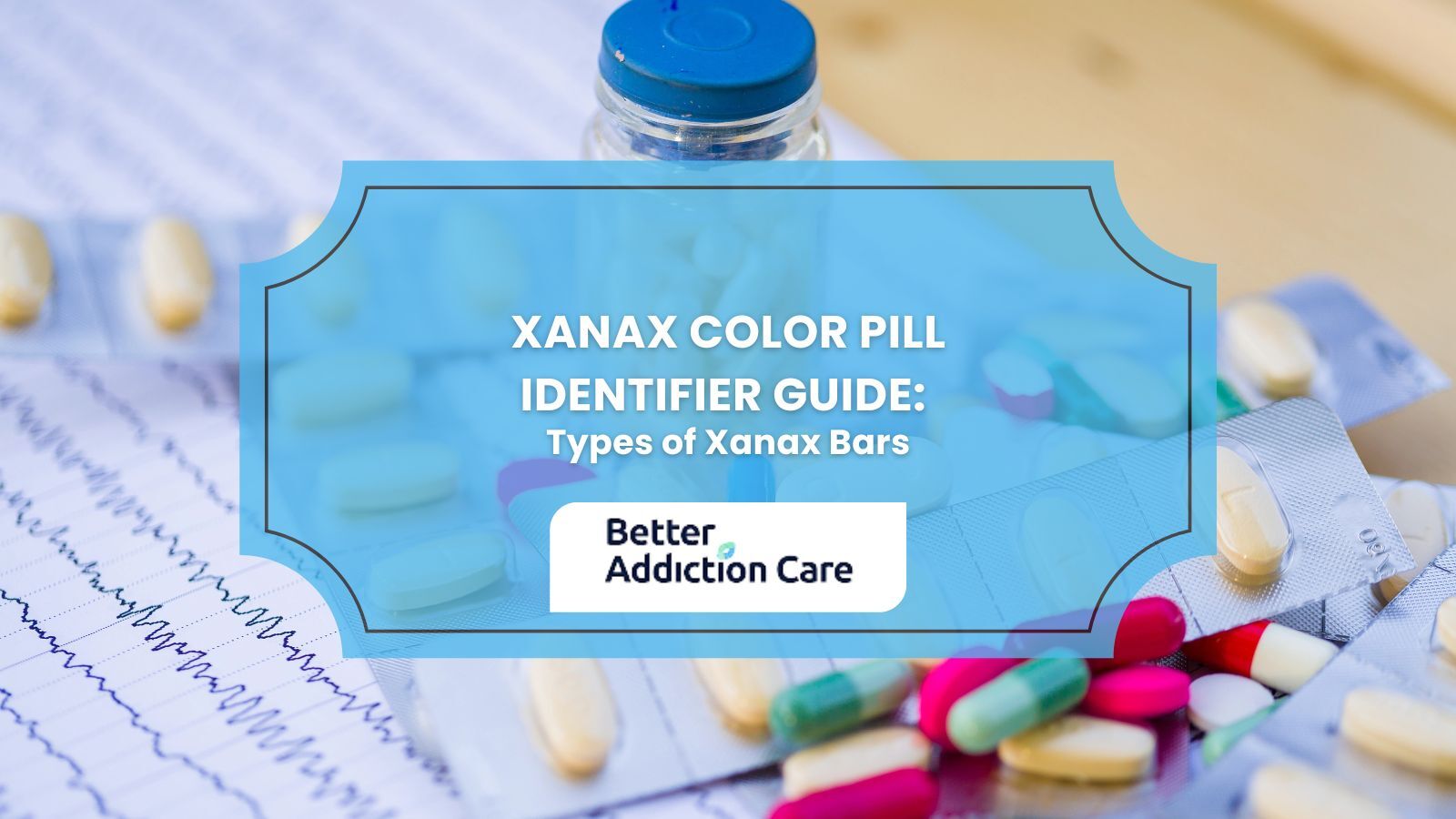
Key Takeaways
-
Accurate identification protects against dangerous mistakes. Xanax pills come in different colors, shapes, and strengths, but the imprint code is the only foolproof way to confirm authenticity. Counterfeit pills are widespread and often mimic the look of real bars, making imprint checks and pharmacy verification essential for safety.
-
Safe use goes beyond knowing the color of a bar. Even when a pill is authentic, risks increase if Xanax is misused — for example, by crushing, splitting, or mixing with alcohol or opioids. Following prescribed doses, storing medication securely, and avoiding unverified sources are critical steps in preventing overdose and dependence.
-
Help is available if misuse or addiction develops. Recognizing warning signs like growing tolerance, withdrawal symptoms, or using Xanax without a prescription is key. With professional support — from medical detox and therapy to long-term recovery programs — it is possible to regain control and move toward lasting health.
The most important rule: color or shape alone cannot confirm a pill’s authenticity — only the imprint code can.
Knowing how to check this and why it matters can protect you from dangerous mistakes, counterfeit pills laced with fentanyl, and accidental misuse.
This guide explains how to identify different types of Xanax bars, what the colors mean, and why proper verification is critical for safe use.
What Is Xanax and Why Identification Matters?
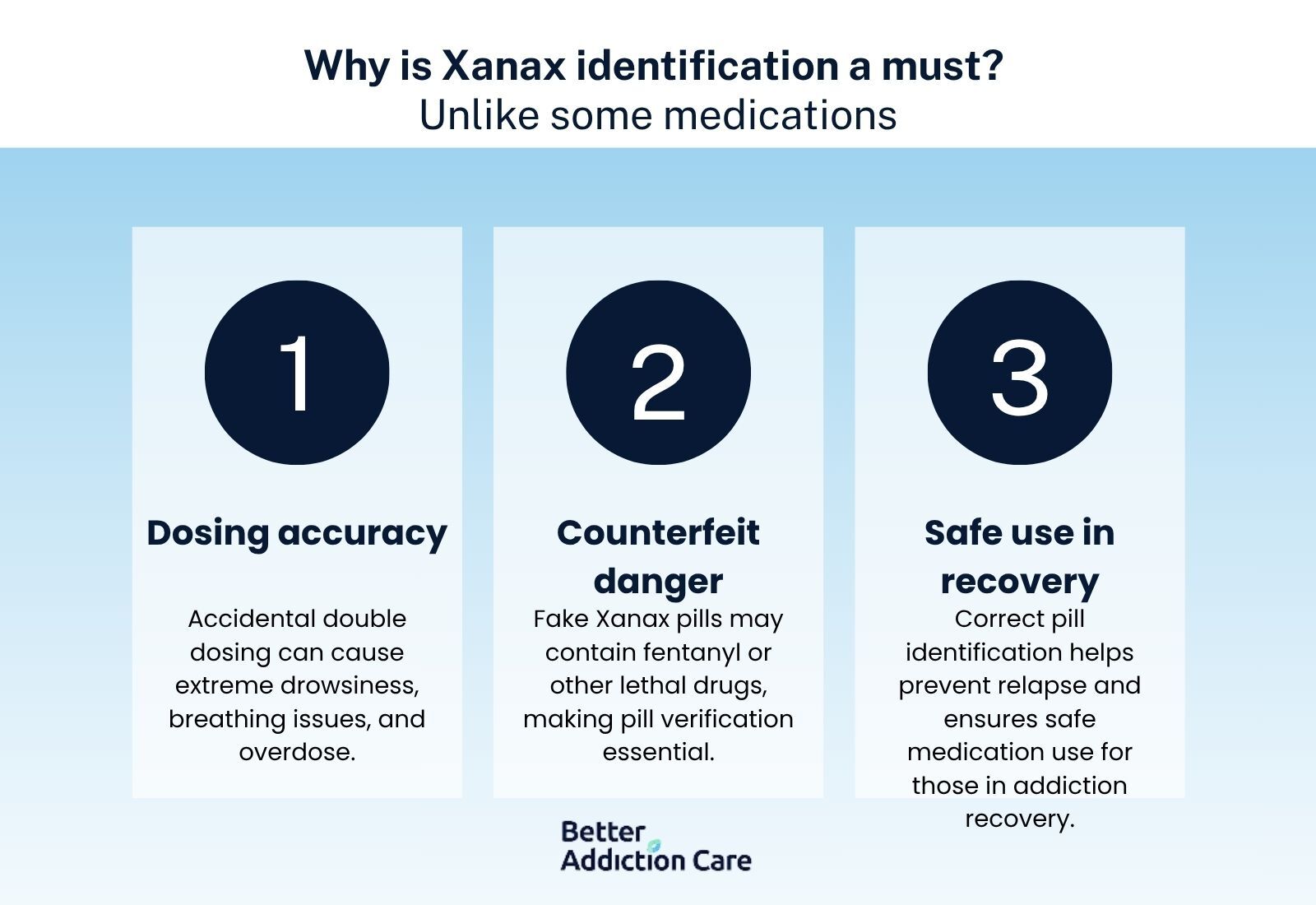
Xanax (generic name alprazolam) is part of a drug class called benzodiazepines, which work by enhancing the activity of a neurotransmitter in the brain called GABA (gamma-aminobutyric acid).
This slows down overactive brain signals, bringing relief from anxiety and panic symptoms.
Doctors typically prescribe Xanax for short-term use because, while it can reduce intense anxiety quickly, it also carries a high risk of dependence and misuse if not carefully monitored[2].
So, why is identification a must? Unlike some medications, Xanax is manufactured in different colors, shapes, and strengths.
Each of these variations is intentional—designed to help users, pharmacists, and healthcare providers tell the difference between a 0.25 mg white tablet and a 2 mg white “bar”, for example.
Here’s why this distinction is critical:
-
Dosing accuracy: Taking twice the strength by accident can increase sedation, impair breathing, and raise overdose risk.
-
Counterfeit danger: Illegally manufactured “Xanax” often looks similar but may contain fentanyl or other dangerous substances, making correct identification literally life-saving [1].
-
Safe use in recovery: For people with a history of addiction or misuse, identifying pills accurately is a key part of relapse prevention and safe medication management.
In short, Xanax is not a drug where “guessing” is safe. Knowing how to read its color, shape, and imprint code is the first step to making sure you’re taking the right medication—and avoiding pills that could do far more harm than good.
Xanax Pill Identifier Basics: Color, Shape, and Imprint Codes
Identifying Xanax correctly isn’t just about recognizing the brand name — it’s about safety. Pills are classified using four main features: color, shape, imprint code, and strength.
Knowing how these features work together can help prevent dangerous mistakes or exposure to counterfeit drugs.
Color, Shape and Strength
Manufacturers use distinct color and shape patterns to differentiate doses.
While certain colors are commonly associated with specific strengths (e.g., white rectangular bars often correspond to 2 mg tablets, peach or orange ovals to 0.5 mg), color alone is not standardized across all manufacturers. Only the imprint code confirms the exact strength.
Xanax is prescribed in several strengths — most often 0.25 mg, 0.5 mg, 1 mg, and 2 mg. Higher strengths are usually rectangular bars, while lower strengths are oval or round.
Accidentally doubling a dose can quickly increase risks of sedation, dependence, and respiratory depression[4].
Common Colors of Xanax Bars and Their Meanings
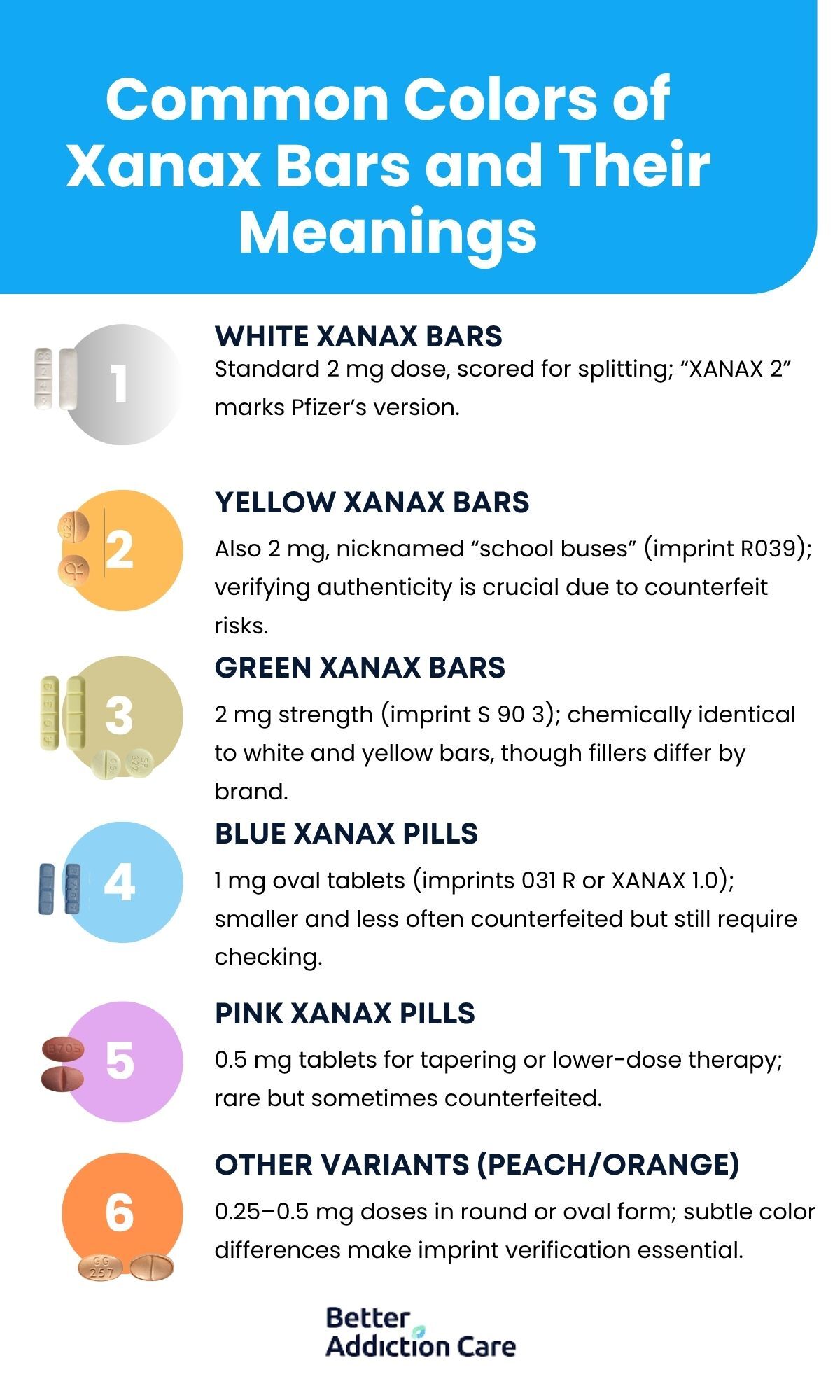
White Xanax Bars
White rectangular bars are among the most common forms of Xanax. They typically contain 2 mg of alprazolam and are scored to allow the pill to be split into four smaller doses.
A white bar marked with “XANAX 2” is the classic Pfizer product, while other manufacturers may use different imprint codes.
Yellow Xanax Bars
Known on the street as “school buses” because of their rectangular shape and color, these bars also usually represent 2 mg doses. Some brands imprint them with numbers like R039, making them distinguishable from Pfizer’s white bars.
Despite their legitimate use, the “school bus” nickname is also common in illicit markets, making imprint verification essential[1].
Green Xanax Bars
Green bars are another 2 mg formulation, often marked with imprints like S 90 3. Pharmacologically, they are identical in strength to white and yellow bars, but inactive ingredients may vary slightly depending on the manufacturer.
Studies note that users sometimes perceive differences in onset or effectiveness, though no clinical evidence confirms that color impacts pharmacological action [5].
Blue Xanax Pills
Blue Xanax pills are typically oval- or football-shaped and often prescribed at the 1 mg strength. Imprints like 031 R or XANAX 1.0 are common. Because they are smaller than bars, they are less frequently counterfeited but still require verification [2].
Pink Xanax Pills
Less common than other colors, pink tablets are usually in 0.5 mg doses. These are often prescribed for patients who require gradual titration or who are being weaned off higher doses. Their lower strength makes them less sought after in illicit markets, but counterfeit versions still exist [6].
Other Variants
Some manufacturers produce peach or orange Xanax pills, usually in the 0.25–0.5 mg range. These are typically round or oval and are most often used when clinicians prescribe small, controlled doses. Because they are less distinctive than bars, patients should pay close attention to imprints to avoid confusion.
Why Color Alone Isn’t Enough?
Although color provides an initial clue, they are not standardized across all manufacturers. Research confirms that inactive ingredient differences (like dyes or binders) can affect patient perception and pill appearance.
But active alprazolam content is determined solely by dosage and imprint code (5,6). This means two pills of the same strength can look different, and counterfeit pills can mimic any color.
Dosage Strengths and Shapes Explained
Xanax (alprazolam) comes in several dosage strengths, each linked to a specific shape and sometimes color. These variations aren’t random — they’re designed to help both prescribers and patients use the medication safely and reduce the risk of accidental misuse.
0.25 mg (Peach/Orange, Round or Oval)
The lowest available strength is often prescribed at the start of treatment for generalized anxiety disorder or panic disorder. Physicians may also use this dose for tapering during discontinuation.
Because of its mild potency, 0.25 mg tablets are less likely to be misused but can still pose a risk of dependence with long-term use[5].
0.5 mg (Peach or Pink, Oval or Round)
This dose is commonly prescribed for patients who need stronger relief but aren’t ready for high-strength bars. The oval shape helps differentiate it from higher-strength rectangular bars.
While considered a “mid-range” dose, misuse can still occur when multiple pills are taken at once. Research indicates that even moderate-strength benzodiazepines contribute significantly to nonmedical use patterns[6].
1 mg (Blue, Oval or Football-Shaped)
The 1 mg dose is often used when lower doses no longer provide adequate symptom control. Its unique football shape with specific imprint codes (e.g., “031 R”) helps prevent confusion with higher-strength bars.
However, the jump from 0.5 mg to 1 mg significantly increases sedation risk, which is why clinicians usually titrate slowly[7].
2 mg (White, Yellow, or Green, Rectangular “Bars”)
This is the highest strength available in a single tablet and also the most recognizable form. These rectangular pills are often scored into four sections, allowing them to be split into smaller doses if needed.
Because they deliver a large amount of alprazolam at once, they carry the greatest risk of dependence, misuse, and overdose. Counterfeit versions of these bars are widespread and frequently contain fentanyl[4].
Why Strength and Shape Matter Together?
Shapes serve as a visual safeguard. For example, the elongated bar shape is strongly associated with 2 mg doses, while oval “footballs” tend to represent 1 mg. This design reduces errors in dispensing and helps patients distinguish between daily prescriptions.
However, research also shows that pill appearance — including shape and size — can influence patient adherence and perceived effectiveness, even when the active drug is identical.
Imprint Codes
The imprint code is the most reliable identifier. It is a series of letters, numbers, or logos legally required on every FDA-approved prescription pill in the U.S. [3]
Each imprint is unique to the manufacturer and dosage. For instance, a white Xanax bar with “XANAX 2” confirms a 2 mg dose from Pfizer. Without a clear imprint, a pill cannot be confirmed as legitimate.
Red Flag – Pills Without Imprints
-
Any pill sold as Xanax that lacks an imprint should be treated as unsafe.
Counterfeit benzodiazepines have become increasingly common and are often laced with fentanyl, a synthetic opioid 50 times stronger than heroin.
Research shows that such counterfeit pills are linked to a sharp rise in overdose deaths in the U.S.[4]
Practical Safety Step
Never rely on appearance alone. For safety:
-
Use the FDA Pill Identification Database or trusted pill identifier tools that require both imprint and color.
-
Confirm with a pharmacist when unsure. Pharmacists have direct resources to verify authenticity.
-
Avoid pills without verifiable markings — they are most likely counterfeit.
Color and shape provide helpful first clues, but the imprint code is the only guaranteed marker of authenticity. Using it as a reference, supported by official databases and pharmacist consultation, dramatically reduces the risks of counterfeit or unsafe Xanax pills.
Counterfeit Risks: How Fake Xanax Mimics Colors and Shapes
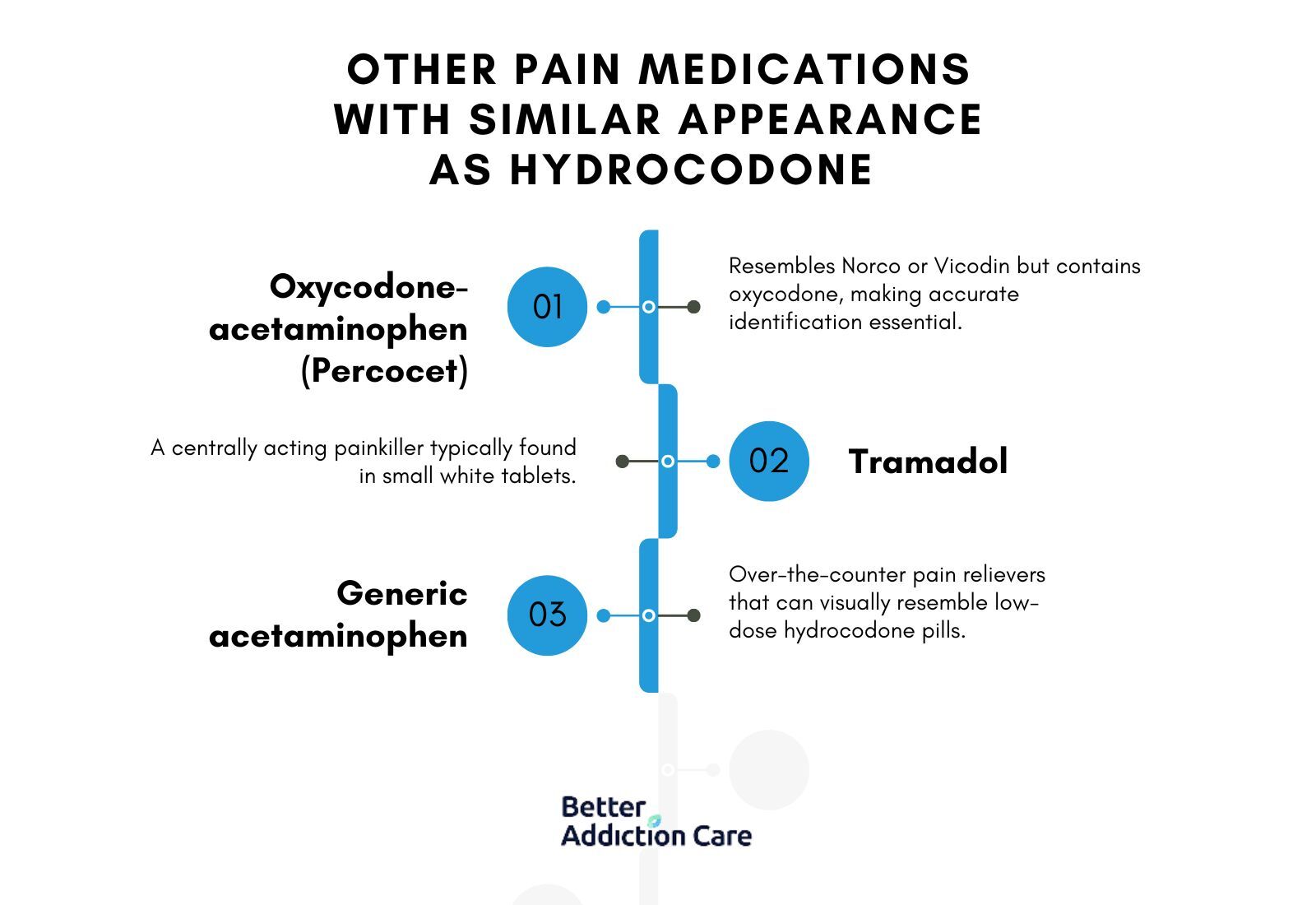
Counterfeit Xanax is a growing danger because illicit manufacturers deliberately design fake bars to look almost identical to legitimate pills.
-
They mimic the same colors, shapes, and even imprints so that people cannot easily tell the difference at a glance.
-
This deceptive similarity makes it much more difficult for users to know whether the pill they have is safe or potentially lethal.
Studies have confirmed that counterfeit benzodiazepines are increasingly laced with fentanyl, a synthetic opioid up to 50 times stronger than heroin. The U.S. Drug Enforcement Administration (DEA) found that 6 out of 10 fentanyl-laced fake prescription pills contain a potentially lethal dose [1].
In one review, researchers documented how counterfeit Xanax containing fentanyl has become a significant driver of overdose deaths, particularly because people mistakenly believe they are taking a standard anti-anxiety medication[4].
The visual imitation itself is strategic.
-
Counterfeit pills are often pressed in white, green, or blue bars with markings similar to those on authentic alprazolam.
-
Patients may assume the imprint guarantees safety, but imprints can be replicated with little effort by counterfeiters.
This problem is compounded by the fact that patients often rely on appearance alone when trusting medication, a factor shown to influence how people perceive the effectiveness of generic versus brand-name drugs[5].
Furthermore, research shows that variations in pill excipients and appearances can directly affect patient confidence and adherence, which makes counterfeit mimicry even more dangerous[6].
Spotting Legit vs. Counterfeit Xanax Bars
While no method outside a licensed pharmacy is 100% reliable, some signs can help raise red flags:
Legitimate Xanax Bars
-
Always dispensed in a labelled prescription bottle from a licensed pharmacy.
-
Consistent weight, size, and scoring (pills break evenly).
-
Imprints match entries in the official FDA Pill Identification Database[3].
-
Packaging includes pharmacy details, patient name, and prescribing physician.
Counterfeit Xanax Bars
-
Purchased from street dealers, online markets, or social media.
-
colors may look slightly faded, blotchy, or too glossy.
-
Pills may feel chalky, brittle, or unusually hard.
-
Imprints can appear uneven, shallow, or overly deep compared to authentic versions.
-
Sold in plastic baggies or loose containers, not prescription bottles.
The practical reality is clear: if a pill is purchased outside of a licensed pharmacy, there is no reliable way to confirm safety by appearance alone.
Even small differences in weight, chalkiness, or scoring may not be obvious enough to detect. The safest step is to use the FDA Pill Identification Database [3] or to consult a pharmacist directly whenever there is doubt.
Safe Use of Xanax Bars
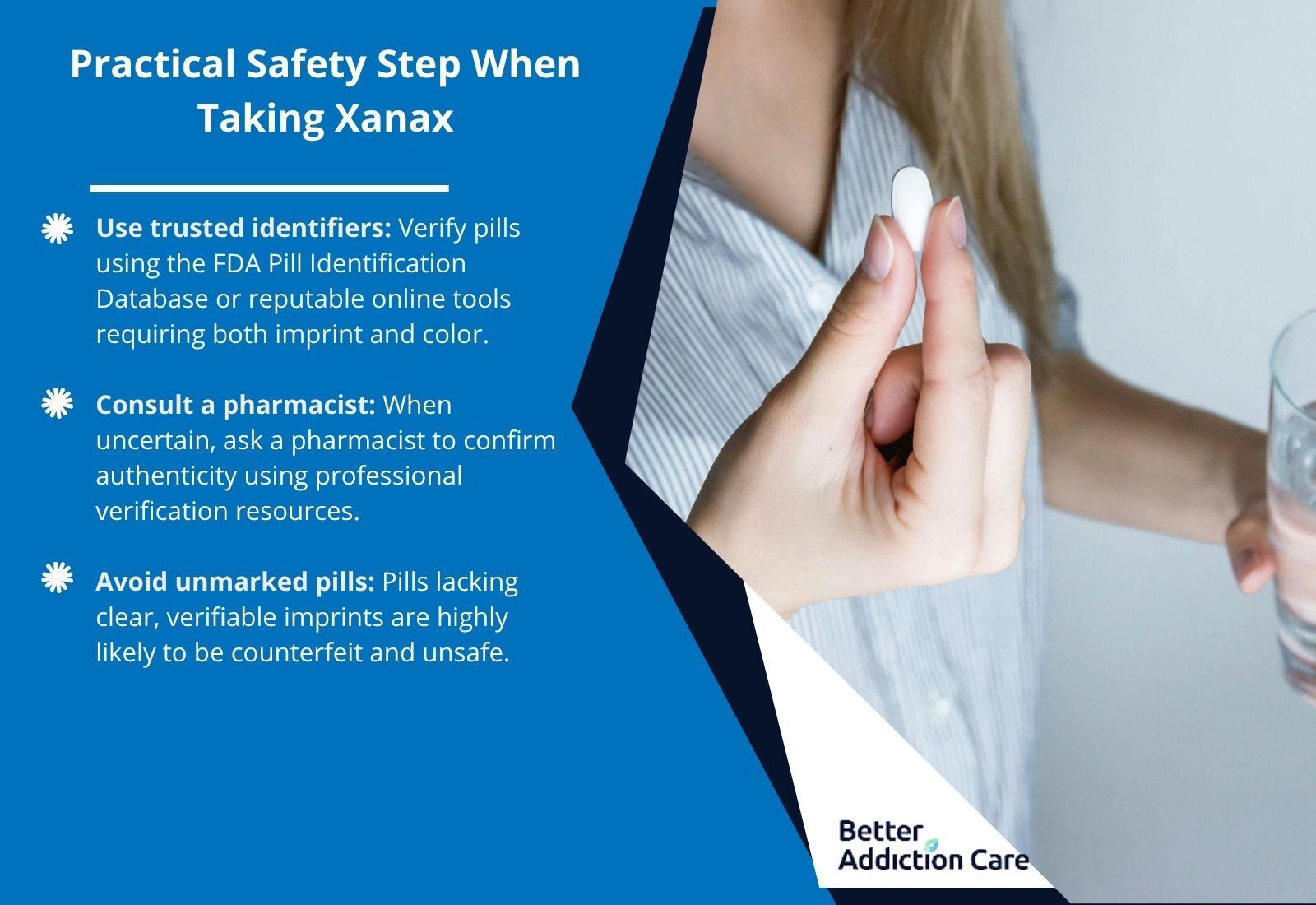
Identifying a Xanax bar correctly is only the first step—using it safely is just as critical. FDA-approved doses for anxiety typically start at 0.25–0.5 mg three times daily, with higher doses reserved for panic disorder [2].
Exceeding prescribed limits or misusing bars (e.g., splitting, crushing, or mixing with alcohol/opioids) can turn a therapeutic dose into a life-threatening one.
Emergency data show that nearly 1 in 3 benzodiazepine-related ER visits involve alcohol or opioids [7], a reminder that misuse often happens alongside other substances. To stay safe:
-
Always confirm pills through a pharmacy or the FDA’s Pill ID tool[3].
-
Store bars in original containers, away from others.
-
Never share or purchase Xanax outside licensed pharmacies.
When Xanax Bars Become Misused?
Correctly identifying a Xanax bar is vital, but so is recognizing when use crosses into misuse or dependence. Warning signs include:
-
Needing higher doses to feel the same relief (tolerance).
-
Feeling anxious, shaky, or sweating when a dose is missed (withdrawal).
-
Taking bars without a prescription or mixing them with alcohol/opioids.
Stopping suddenly is dangerous—severe withdrawal can trigger seizures [2][4]. Safe tapering must be supervised by a medical professional.
Treatment often combines:
-
Detox support to manage withdrawal safely.
-
Therapies like CBT for anxiety and coping skills.
-
Support groups that reduce isolation and provide accountability.
Conclusion & Next Steps
Xanax pill colors and identifiers are more than markings—they’re a safeguard against dangerous mistakes and counterfeit risks.
By learning to recognize the differences between legitimate Xanax and fakes, you protect yourself or a loved one from accidental overdose and misuse.
If you’ve confirmed your medication is authentic, follow your doctor’s directions closely and never share your prescription. If you’re unsure about a pill’s origin, check it using the FDA’s Pill Identification Database or consult a licensed pharmacist.
Common Questions About Ideentifying Xanax Pills
No. While 2 mg Xanax often comes in bar-shaped tablets, lower doses (like 0.25 mg, 0.5 mg, or 1 mg) are usually round or oval. Not every Xanax pill is a “bar.”
Yes. Generic alprazolam can differ in color, shape, and imprint, depending on the manufacturer. This sometimes confuses patients who switch pharmacies.
Those are imprint codes required by the FDA. They help identify the exact manufacturer, strength, and authenticity of the pill.
No. While some users try this, it’s unreliable and unsafe. Only imprints and FDA-approved identifiers are trustworthy.
“Blue footballs” is a street term for 1 mg oval Xanax pills. These slang names are common but should not be used as identifiers since counterfeits often copy them.
If you suspect a pill was counterfeit, seek emergency medical help immediately, especially if unusual symptoms like difficulty breathing, confusion, or extreme drowsiness occur.
Only available for purchase through a licensed pharmacy with a prescription. Many online sources sell counterfeit pills, which carry high risks.
Resources
Related Articles
Treatment Centers in New York




